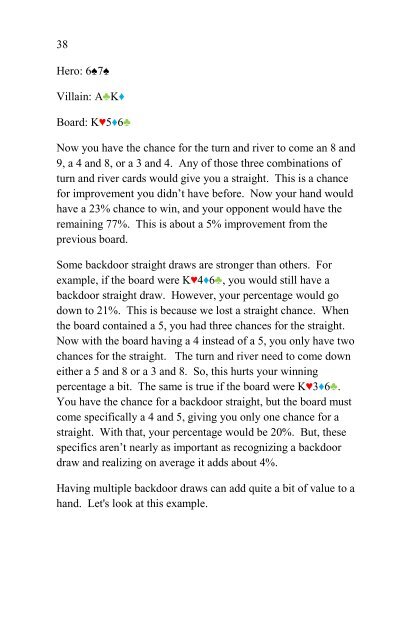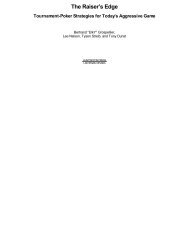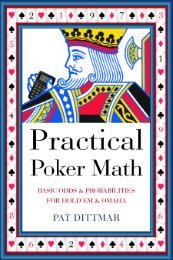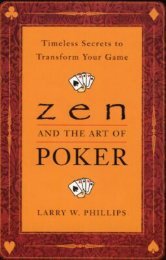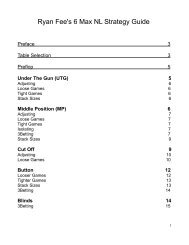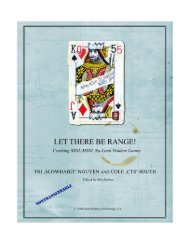Create successful ePaper yourself
Turn your PDF publications into a flip-book with our unique Google optimized e-Paper software.
38<br />
Hero: 6♠7♠<br />
Villain: A♣K♦<br />
Board: K♥5♦6♣<br />
Now you have the chance for the turn and river to come an 8 and<br />
9, a 4 and 8, or a 3 and 4. Any of those three combinations of<br />
turn and river cards would give you a straight. This is a chance<br />
for improvement you didn’t have before. Now your hand would<br />
have a 23% chance to win, and your opponent would have the<br />
remaining 77%. This is about a 5% improvement from the<br />
previous board.<br />
Some backdoor straight draws are stronger than others. For<br />
example, if the board were K♥4♦6♣, you would still have a<br />
backdoor straight draw. However, your percentage would go<br />
down to 21%. This is because we lost a straight chance. When<br />
the board contained a 5, you had three chances for the straight.<br />
Now with the board having a 4 instead of a 5, you only have two<br />
chances for the straight. The turn and river need to come down<br />
either a 5 and 8 or a 3 and 8. So, this hurts your winning<br />
percentage a bit. The same is true if the board were K♥3♦6♣.<br />
You have the chance for a backdoor straight, but the board must<br />
come specifically a 4 and 5, giving you only one chance for a<br />
straight. With that, your percentage would be 20%. But, these<br />
specifics aren’t nearly as important as recognizing a backdoor<br />
draw and realizing on average it adds about 4%.<br />
Having multiple backdoor draws can add quite a bit of value to a<br />
hand. Let's look at this example.


